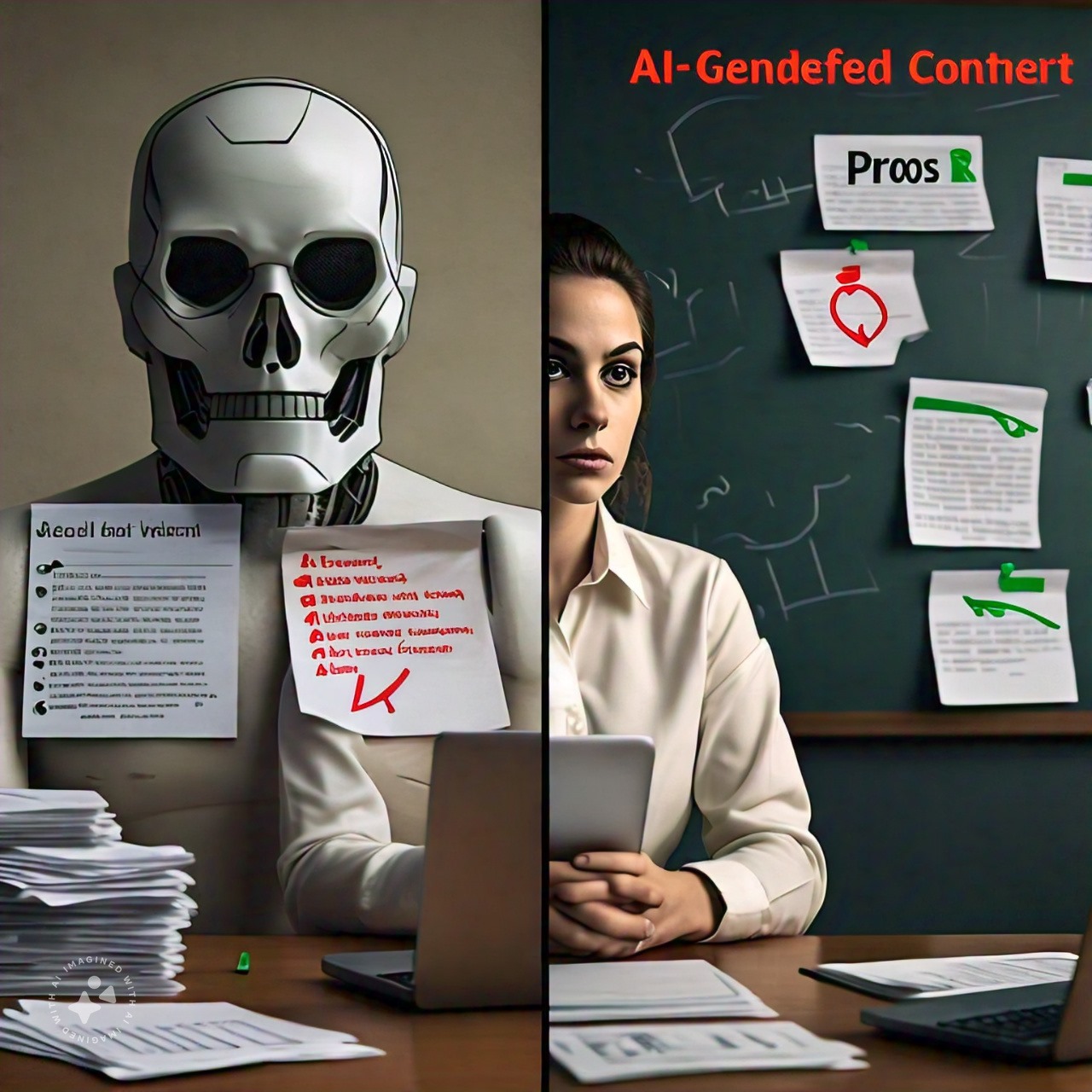AI-generated content is becoming popular, but many people wonder how to use it and if it truly sounds authentic.
AI is growing rapidly in the tech sector, including supply chain, food industry, chatbot, and content and image generation use cases. AI-generated images made the news when critics claimed AI art systems were stealing people’s intellectual property on large models, such OpenAI’s Dall-E.AI-generated content has both advantages and disadvantages.
Pros:
- Efficiency: AI can produce content rapidly, making it an excellent tool for generating large volumes of text quickly. This is particularly useful for news articles, product descriptions, and social media updates.
- Cost-effective: Utilizing AI for content creation can reduce costs associated with hiring multiple writers or content creators.
- Consistency: AI can maintain a consistent tone and style across all content, ensuring uniformity, especially for brand messaging.
- Scalability: AI can easily scale content production to meet demand without the limitations of human labor.
- Data-driven: AI can analyze data and trends to create content that is highly relevant and tailored to specific audiences.
Cons:
- Lack of Creativity: AI-generated content often lacks the creativity and nuance that human writers bring, resulting in text that can be formulaic or uninspired.
- Quality Issues: AI can sometimes produce content that is grammatically incorrect, lacks coherence, or contains factual inaccuracies.
- Ethical Concerns: The use of AI in content creation raises questions about authorship, originality, and the potential for plagiarism.
- Dependence on Data: AI relies on existing data to generate content, which can perpetuate biases and limit the introduction of new, innovative ideas.
- Limited Emotional Connection: AI may struggle to convey emotions and connect with readers on a personal level, which is often crucial for engaging and persuasive content.

